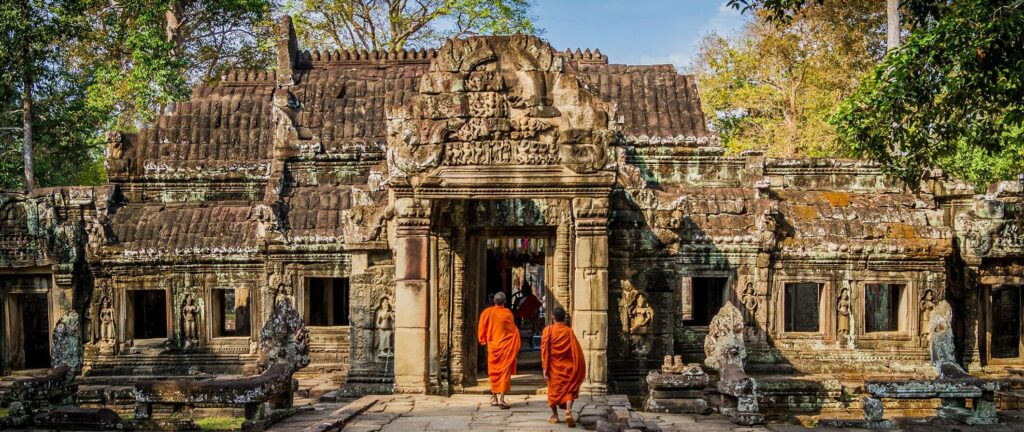- reservations@mexa.co.za
- 087 265 8148
The crown jewel of Siem Reap is undoubtedly the awe-inspiring Angkor Archaeological Park, a UNESCO World Heritage Site and one of the most important archaeological sites in Southeast Asia. Spread over 400 square kilometers, the park is home to hundreds of ancient temples, including the iconic Angkor Wat, the largest religious monument in the world. Watching the sunrise over the majestic temple spires is a bucket-list experience for many travelers, and exploring the intricate carvings and towering structures transports visitors back in time to the glory days of the Khmer Empire.
While Angkor Wat steals the spotlight, Siem Reap is also home to several other captivating temples that are worth exploring. The Bayon Temple, famous for its enigmatic stone faces, and Ta Prohm, enveloped by giant tree roots, offer an enchanting atmosphere for photography and exploration. Banteay Srei, known for its intricate pink sandstone carvings, showcases the artistic genius of ancient Khmer craftsmanship.
Beyond the temples, Siem Reap offers ample opportunities for cultural immersion. The Angkor National Museum provides an insightful journey into the history and significance of the Angkor complex, giving visitors a deeper understanding of the Khmer civilization. For a taste of traditional Cambodian performing arts, catch an Apsara dance performance, which showcases graceful movements and intricate costumes inspired by celestial dancers.
Cambodian cuisine, with its aromatic spices and fresh ingredients, is a treat for the taste buds. Siem Reap’s bustling markets and street food stalls offer a variety of delectable dishes, such as Fish Amok (a coconut milk-based curry), Lok Lak (stir-fried beef), and Nom Banh Chok (rice noodles with fish gravy). Be sure to explore the lively Pub Street, where an array of restaurants and bars offer both local and international flavors, making it an excellent spot to unwind after a day of temple hopping.
Siem Reap encourages travelers to engage with the local community and gain a deeper appreciation for Cambodian culture. Visitors can participate in community-based tourism initiatives, such as visiting rural villages, learning traditional crafts, and supporting local artisans. These experiences offer a more authentic and meaningful connection to the heart of Cambodia.
Conclusion
Siem Reap is a destination that weaves history, culture, and natural beauty into an unforgettable tapestry. The ancient temples of Angkor, the vibrant local culture, and the warm smiles of its people create an enchanting experience that lingers in the hearts of travelers long after they depart. Whether you’re an avid history enthusiast, a cultural explorer, or simply a curious adventurer, Siem Reap beckons you with its timeless allure and promises an enriching journey through the wonders of Cambodia’s past and present.
Nestled in the northwestern part of Cambodia, Siem Reap is a captivating city renowned for its ancient temples, rich cultural heritage, and warm hospitality. Serving as the gateway to the world-famous Angkor Archaeological Park, Siem Reap attracts travelers from all corners of the globe who seek to immerse themselves in the wonders of Khmer history and experience the vibrant local culture. Beyond the ancient temples, this city offers a vibrant nightlife, delicious cuisine, and opportunities to engage with the friendly local community.

